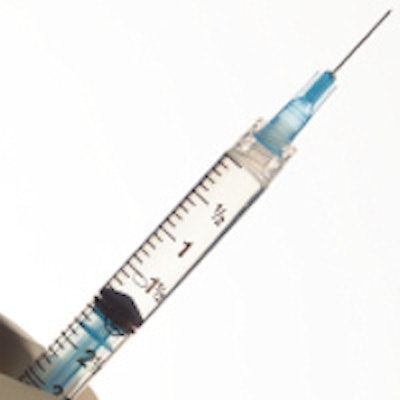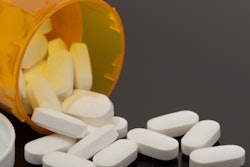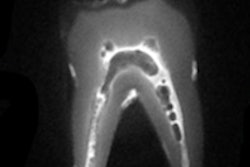
Morphine given by intra-articular injection after arthrocentesis significantly reduces temporomandibular joint (TMJ)-related pain compared with arthrocentesis alone, according to a new study.
Researchers from the department of oral and maxillofacial surgery at the University of Marmara Faculty of Dentistry in Istanbul found a similar but shorter-lived effect with tramadol.
Inflammation is among the causes of TMJ-related pain, and there is increasing evidence that opioids can provide pain relief, particularly in inflamed tissue, the study authors wrote (British Journal of Oral and Maxillofacial Surgery, January 23, 2015).
Morphine is a widely used opioid that is accepted as the most effective treatment for pain, while tramadol has a similar analgesic effect to morphine, they noted.
The researchers' goal was to find out whether morphine or tramadol injected intra-articularly after arthrocentesis with Ringer's lactate solution was effective for patients with painful TMJ joints and whether this effect persisted.
“If the drug is given into the joint, it avoids the side effects caused by systemic injection, and maximum efficiency is possible as the drug is placed directly onto the damaged tissue.”
"If the drug is given into the joint, it avoids the side effects caused by systemic injection, and maximum efficiency is possible as the drug is placed directly onto the damaged tissue," the authors noted.
The researchers looked at 30 patients, which included 25 women and five men between the ages of 16 and 50 who had their internal derangements of the TMJ classified as Wilkes stage III or higher according to MRI. They only included patients who did not respond to conservative management and had complained of pain for at least six months.
The study participants were divided randomly into three groups of 10 each and treated by arthrocentesis followed by drugs given as intra-articular injections.
The control group was given 1 mL of 5% Ringer's lactate solution, the second group received 1 mg of morphine made up with 10 mL of 5% Ringer's lactate, and the third was given 50 mg of tramadol mixed with 1 mL of 5% Ringer's lactate solution.
The patients were asked to rank their pain on the visual analogue score (VAS) for pain, with zero equal to no pain and 10 indicating the worst pain imaginable. They were evaluated before and after the procedure at 15 and 30 minutes, then at 1, 2, 3, 8, 12, 24, 36, and 48 hours, as well as 1, 3, and 6 months.
Maximum mouth opening, assisted mouth opening, and the degree of lateral and protrusive movements were measured and evaluated before the procedure and then 1, 3, and 6 months later by the surgeon.
The authors reported no complications or complaints during or after arthrocentesis or intra-articular injections, which they noted could be due to the minimal absorption of opioids. They found that mean VAS for mouth opening decreased from 7.10 to 1.77 at six months, which was independent of the pain severity-related groups.
The researchers also found a significant decrease in pain scores during the follow-up periods; however, the VAS were lower in patients managed with intra-articular injection and arthrocentesis than patients managed only with arthrocentesis alone. The mean VAS decreased from 6.90 to 2.6 in the control group, from 7.30 to 1.20 in the morphine group, and from 7.10 to 1.50 in the tramadol group.
The mean VAS for mouth opening in the morphine group after 30 minutes and at 1, 2, 3, 8, 12, 24, 36, and 48 hours, as well as at 1 and 3 months, were significantly less than those observed during the same period in the placebo group. In the tramadol group, the mean VAS for mouth opening at 30 minutes and 3 hours were significantly less than those in the control group.
In the control group, most of the patients used analgesics (tenoxicam 20 mg) the evening after the procedure. In the morphine group, only one patient needed to, whereas three patients needed to in the tramadol group.
"The reason for lower pain scores in the morphine group could be explained by the greater analgesic efficacy of morphine over tramadol," the authors wrote.
While both drugs were more effective in controlling peripheral pain than placebo, the authors pointed out that the opioid analgesics had lost their effect by six months, as there was no difference between the groups at that point.
"These results can be used as a pilot study for future long-term studies," the authors concluded. "However, more standardized studies of different doses and drugs may be needed."



















